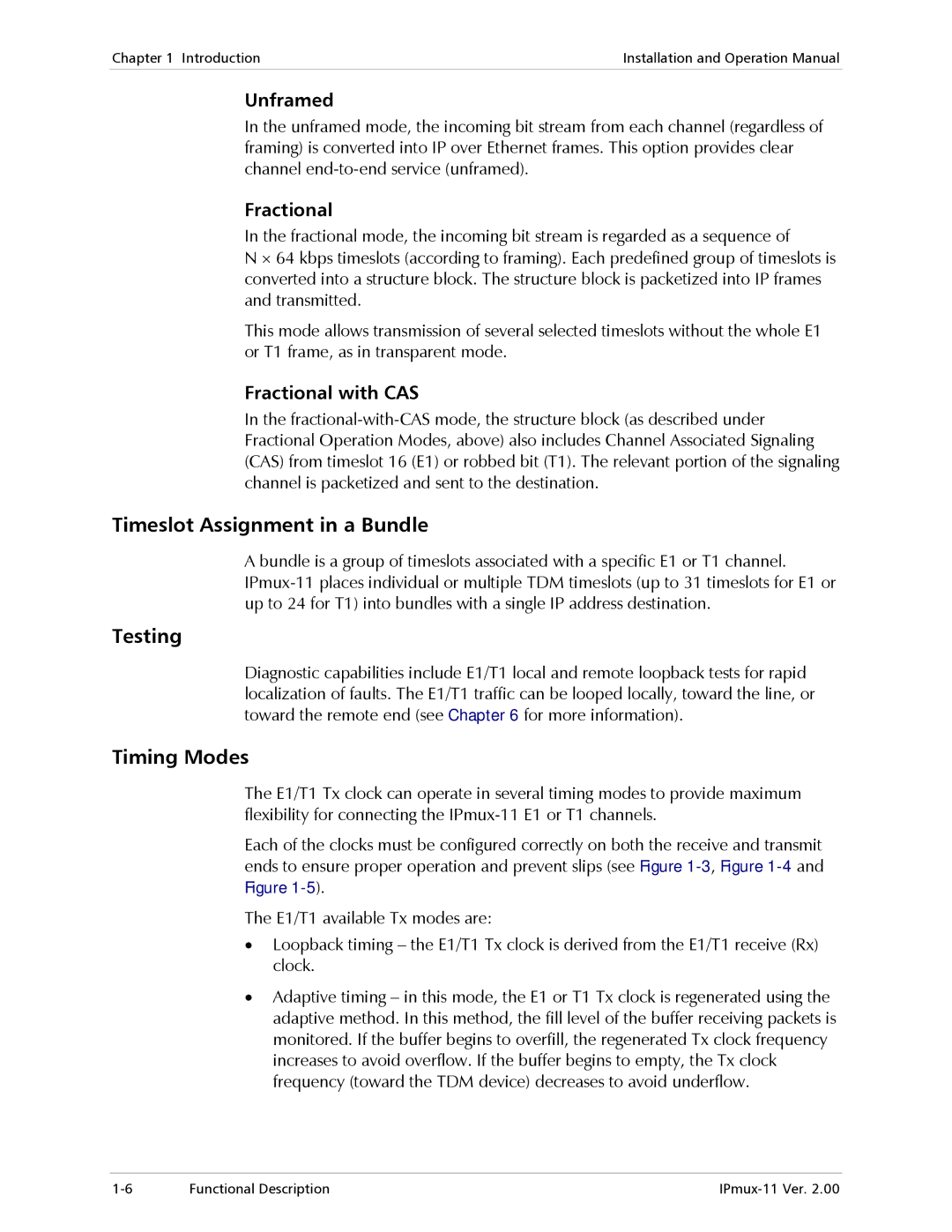Chapter 1 Introduction | Installation and Operation Manual |
|
|
Unframed
In the unframed mode, the incoming bit stream from each channel (regardless of framing) is converted into IP over Ethernet frames. This option provides clear channel
Fractional
In the fractional mode, the incoming bit stream is regarded as a sequence of
N ⋅ 64 kbps timeslots (according to framing). Each predefined group of timeslots is converted into a structure block. The structure block is packetized into IP frames and transmitted.
This mode allows transmission of several selected timeslots without the whole E1 or T1 frame, as in transparent mode.
Fractional with CAS
In the
Timeslot Assignment in a Bundle
A bundle is a group of timeslots associated with a specific E1 or T1 channel.
Testing
Diagnostic capabilities include E1/T1 local and remote loopback tests for rapid localization of faults. The E1/T1 traffic can be looped locally, toward the line, or toward the remote end (see Chapter 6 for more information).
Timing Modes
The E1/T1 Tx clock can operate in several timing modes to provide maximum flexibility for connecting the
Each of the clocks must be configured correctly on both the receive and transmit ends to ensure proper operation and prevent slips (see Figure
The E1/T1 available Tx modes are:
•Loopback timing – the E1/T1 Tx clock is derived from the E1/T1 receive (Rx) clock.
•Adaptive timing – in this mode, the E1 or T1 Tx clock is regenerated using the adaptive method. In this method, the fill level of the buffer receiving packets is monitored. If the buffer begins to overfill, the regenerated Tx clock frequency increases to avoid overflow. If the buffer begins to empty, the Tx clock frequency (toward the TDM device) decreases to avoid underflow.
Functional Description |
